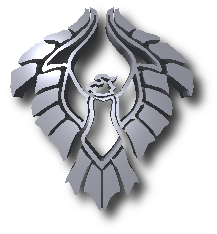I had an internal AG60 IR16 threading/boring bar and a cheap chinesium AXA tool holder. Unfortunately, the boring bar was 0.787" in diameter, and the tool holder took a 1" (direct) or a 3/4" (with the included sleeve) boring bar. So, I needed to increase the size of the sleeve. Here's how you do it.
First, take ALL the dimensions down. This is required because once we set up for the actual work, the measurements change, and we have to do this with a relative dimension.
Determine the existing inside diameter of the sleeve. In this case, 0.757" (a few thousandths over the size it supports). With the target of 0.787" (I'm guessing 0.787402", which is 20mm), I needed to increase the inside diameter from 0.757" to 0.794". This is the critical measurement - it is an increase of 0.037".
With that known, grab a slice of metal the approximate size of the gap (relaxed, of course). The closer to the sleeve wall thickness the better. Shim this as needed to get a decent, nearly tight fit in that sleeve slot.
Lock this down in the lathe chuck. You will note the diameter will probably change, which is why you had to determine the relative size earlier. Now you can measure the inside diameter (not through the shim area, of course). Add the relative value from earlier, and that is our target. Now you can bore it to the target dimension. When you release it from the chuck, it should fit the boring bar and the sleeve should still slide into the AXA holder (since we didn't change that). Here is the finished assembly. Note the shim sitting right by the tool holder (under my hand). I'm pointing to the slot in the sleeve.
Next up, I printed out a template for a 127 hole pattern onto a 5" disc (that is 0.25" thick). This will give me a 127 hole index plate. There are a number of tools to generate these templates, which include the diameters. As my index plates are so small that the index holes would run into each other, i had to run the pattern in three layers. The pattern was glued to the blank using 3M's contact cement (it will come off easily when done).
Then, I could use a spring punch to set the drill holes for everything.
With that done, I just have to drill 131 holes (the 127 index holes, the center hole, and the three holes to lock the plate down).
Ugh, 127 holes with a size/number 32 drill bit takes a while, and your arms get tired. Add in to that that you are likely to break multiple drill bits, and you should order a bunch of bits before you start. I had to wait until the replacements came, and finally got it drilled out and set in place :
To do the bore for the plate, I needed to get to 1.26". I don't have a drill bit that big. So, I left that hole as a 0.25", and then used the drill bit still in the hole to get it centered in the lathe. The set up is the plate in the 4-jaw independent, with the drill bit protruding and being used as the registration surface with the dial indicator. Once adjusted, then I could drill to to 0.5" and bore it all the way.
Now, I've increased my ability to cut a 127 tooth gear now, which will enable metric threading. I'm kinda excited for this. I just need an 8.125" blank that I can prepare. While I am at it, I need to do a 100 tooth gear blank, so about a 7.250" blank that I can turn down.





